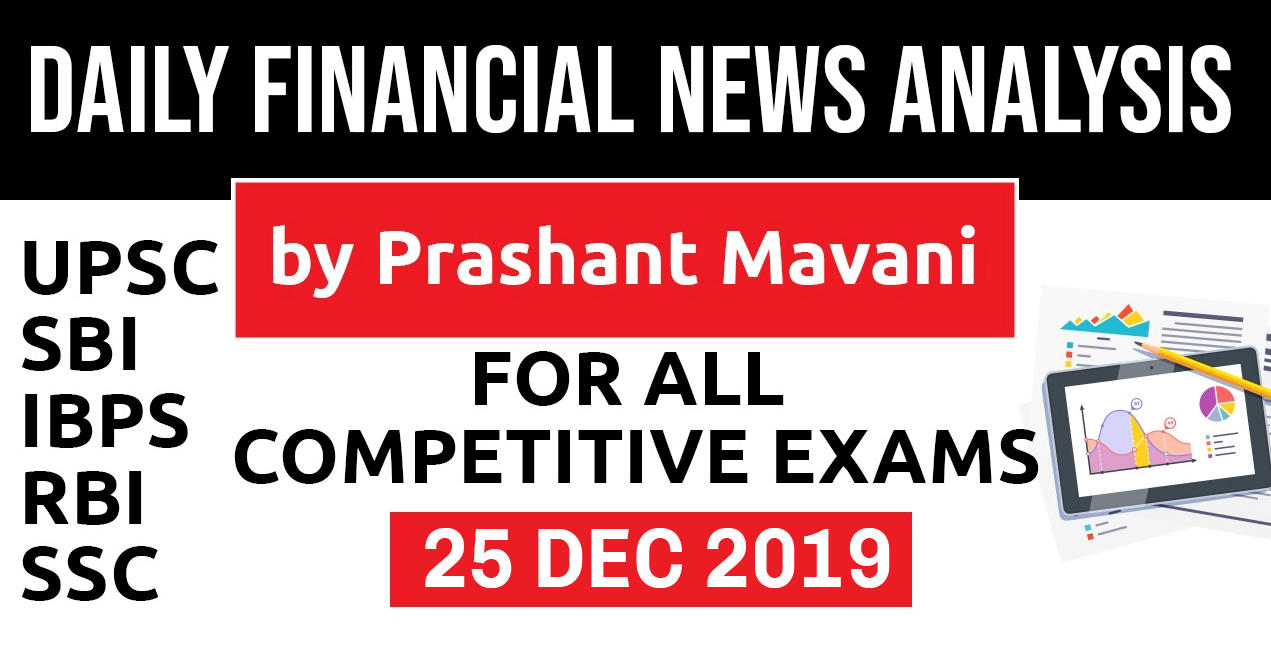Table of Contents
GST Slabs
- A committee of officials from the Centre and the states on GST revenue augmentation.
- Collapse the 5 goods and services tax (GST) slabs into 2 i.e. 10% and 20%
- Address inverted duty structure distortions in order to simplify the system and combat a shortfall in collections.


- These items are in the 5% and 12% slabs face an inverted duty structure
- Which has led to refund outgo of as much as ₹20,000 crore on account of input tax credit.
- The GST Council had, at its recent meeting, asked Modi to look into revenue augmentation measures.
- According to the presentation, there could be a shortfall of ₹63,200 crore in GST collections in the current financial year
- Also as much as ₹2 lakh crore by 2021.
Urea Subsidy Programme
- Top officials of fertilser, food and agriculture ministries meeting.
- Aim: to work out a new urea subisdy scheme that proposed to transfer the subsidy directly into the bank accounts of farmers.
- The direct cash transfer aims to replace the existing direct benefit transfer system.
- The government seeks to check any diversion in urea sales
- Optimizing urea consumption
- This move may result in annual saving of Rs 10,000 crore i.e. 15-20% of the government’s total urea subsidy bill.
- Under DBT, the subsidy amount is paid to fertiliser companies after farmers buy urea at 1/3rd the price of the crop nutient from retailer.
- Officails: it is very complicated to formulate a foolproof system
- There is hardly any uniformity in the usage of urea in different parts of the country.
- The Government needs to integrate farmers’ database with land holding size and soil health card to determine exact quantity of urea used per hectare.
- The official said the roll out will take at least a year.
LOOK WEST POLICY
- India and Oman signed a Maritime Transport Agreement.
- During the visit of our foreign minister S Jaishankar to the Sultanate.
- The pact – the first with any Gulf country – enables India to expand its footprint in the western Indian Ocean, the Persian Gulf and east Africa.

- In a significant development that will have a far-reaching impact on stability in the Persian Gulf, Strait of Hormuz and India’s interests in the region.
- Jaishankar met his counterparts from Oman and Iran for lunch in Muscat on Tuesday for what can be described as the first trilateral of sorts.
- Oman is playing the role of mediator between the US and Iran and between Iran and the Gulf powers.
- Iran, Oman and India are part of the Ashgabat Agreement connecting Indian Ocean with Eurasia.
- Jaishankar travelled to Muscat from Tehran, where he held talks over Sunday and Monday to accelerate operations in Chabahar port.
- Oman, India’s oldest strategic partner in the Gulf, seeks to emerge as a hub for India for eastern Africa and the Indian Ocean Region, furthering New Delhi’s Indo-Pacific strategy.

- The two countries enjoy warm and cordial relations attributed to historical maritime trade linkages and close links of Oman’s royal family with India.
- Oman has allowed India, including its navy, access to its Duqm port, about 550 km south of the capital Muscat.
- The Port of Duqm SEZ, which is earmarked to be the Indian Ocean’s largest deep-sea port, is where an Indo-Oman joint venture, Sebacic Oman, is undertaking a $1.2 billion project to set up the largest sebacic acid plant in the Middle-East.
- An agreement to develop Little India, an integrated tourism complex project in Duqm worth $748 million, has been signed between the two countries.
- Oman’s sea ports and industrial hubs established along its 1,700 km coast on the Indian Ocean makes it an ideal home for international businesses.
- “The Sultanate of Oman offers four sea ports and an equal number of industry free-zones, all facing the Indian Ocean, and Indian private and public sector companies are increasingly increasing their footfall in the country,” Oman’s ambassador to India, Sheikh Hamad Bin Saif Al Rawahi
- Prime Minister Narinder Modi’s visit to Oman in 2018 initiated a new energy in bilateral relations, with enhanced cooperation in trade and investment, energy, defence, security, food security and regional issues, according to Al Rawahi.
- The industrial zones at Oman’s Duqm offer a range of incentives, including 30-year corporate tax exemption, zero customs duty, 100% foreign ownership and full repatriation of profit.
- India is among Oman’s top trading partners, with bilateral trade reaching $5 billion in 2018-19.
- India was the second-largest importer of crude oil from Oman in 2018.
- There are over 780,000 Indian citizens living in Oman, the second-largest expatriate community in the country.
- Investment flows between Oman and India have increased and have been robust, as reflected in numerous joint ventures, established in both countries, with total investment estimated at $7.5 billion.
- There are over 3,200 Indian enterprises and establishments in Oman and 400 flights a week between the two countries.
Loan stress rose in H1FY20
- Stress in large accounts has been on the rise at both private and public sector banks in H1FY20.
- RBI: flagged increasing concentration risk and worsening asset quality in retail loans.
- Among sectors that remain stressed are power, NBFCs and real estate.
- Loans classified as SMA 1 by state-owned lenders, or loans overdue between 30 and 60 days, rose to 1.6% as a share of gross advances in September from 1.3% in March.
- The ratio for private sector banks rose to 1.9% in September from 1.8% in March.
- SMA 2 accounts — or loans overdue between 60 and 90 days — rose to 2.2% in September from 0.7% in March for public sector banks.
- For private banks the ratio rose to 1.2% in September from 0.5% in March.
- The central bank said the retail loan space may be emerging as a new source of risk for lenders in an environment of subdued economic growth.
- Lenders have been moving away from large industrial loans towards retail loans as the non-performing assets (NPA) ratios of the latter have traditionally been low.
IMF on India
- India is in the midst of a significant economic slowdown.
- IMF is asking for urgent steps to reverse slowdown while continuing with credible fiscal consolidation and cautioning against fiscal measures to support growth.
- The report presented two scenarios with the second one pushing for significant reforms around three pillars to boost growth.
- Ongoing cleanup of bank balance sheets should be complemented by a decisive strengthening of PSB governance and regulation and oversight of NBFCs
- A medium-term fiscal consolidation path should be anchored by the Fiscal Responsibility and Budget Management Review Committee’s recommendation to reduce general government debt toward 60% of GDP
- Unveil labour, land and productivity reforms.
- It backed continuation of monetary easing, but cautioned against fiscal stimulus to boost growth.
- Over the medium term, growth is projected to gradually rise to its medium-term potential of 7.3% on continued commitment
- inflation targeting
- gradual macro-financial and structural reforms
- GST reforms
- IBC
- Liberlise FDI
- Impove EoDB

Hypersonic weapons
- President Vladimir Putin said today that Russia is the only country in the world that has hypersonic weapons.
- Putin said that for the first time in history Russia has an edge in designing a new class of weapons unlike in the past when it was catching up with the United States.
- He said that the first unit equipped with the Avangard hypersonic glide vehicle is set to go on duty this month.
- Air-launched Kinzhal hypersonic missiles already have entered service.
- Putin has said that the missile flies 10 times faster than the speed of sound, has a range of more than 2,000 kilometers (1,250 miles) and can carry a nuclear or a conventional warhead.
MSMEs
- The government on Tuesday said it envisions micro, small and medium enterprises (MSMEs) to contribute USD 2 trillion to the country’s target of becoming USD 5 trillion economy by 2024.
- Under the Prime Minister’s Employment Generation Programme (PMEGP), 65,312 new micro-enterprises have been set up, the MSME Ministry said in its year-end review for 2019.
FASTags
- Within eight days of FASTag implementation, FASTag’s toll transaction has reached about 24 lakh on a daily basis.
- The pan-India roll out of electronic toll collection on national highways (NHs) has resulted in issuance of 1.10 crore FASTags till date
Download Free PDF























 WhatsApp
WhatsApp